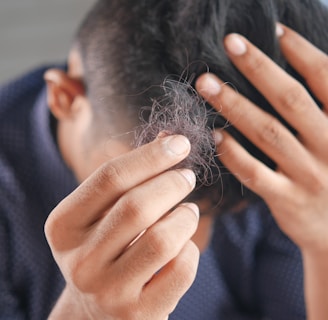Bald patches (Alopecia) and their treatment
Alopecia can be influenced by genetics, hormonal changes, autoimmune responses, physical or emotional stress, or certain medical conditions and treatments. Treatment options vary based on the type and cause of alopecia and may include medications, therapies, or lifestyle changes.


Bald patches (Alopecia) and their treatment
Bald patches, or localized areas of hair loss, are a common concern in India, just as in many other parts of the world. This condition can be caused by various factors, and understanding its causes and treatment options is crucial for effective management. Here are some common causes of bald patches and their respective treatment options:
Causes:
Alopecia Areata: An autoimmune condition where the immune system attacks hair follicles, leading to small, round bald patches.
Androgenic Alopecia: Male or female pattern baldness often runs in families and can cause gradual thinning and bald patches. Highly associated with high testosterone levels.
Alopecia Totalis: A more advanced form of alopecia areata, resulting in the complete loss of hair on the scalp.
Alopecia Universalis: The most severe form, causing total hair loss on the entire body, including the scalp, eyebrows, and eyelashes.
Fungal Infections: Ringworm (tinea capitis) is a fungal infection that can cause bald spots with scaly, red patches.
Traction Alopecia: Repeated tension or pulling on the hair, often due to tight hairstyles, can cause bald patches.
Scalp Psoriasis: A chronic skin condition that causes red, scaly patches on the scalp, which can lead to hair loss.
Hormonal Changes: Conditions like thyroid disorders or hormonal imbalances can lead to hair loss.
Stress: Physical or emotional stress can trigger hair loss, leading to bald patches (telogen effluvium).
Trichotillomania: A psychological condition where individuals compulsively pull out their hair, leading to bald patches.
How can I grow my hair back?
It's essential to identify the root cause of your hair loss before proceeding with treatment. In my practice, androgenic alopecia is the only condition where homeopathic medications can slow down hair loss, but reversing it isn't possible.
For autoimmune conditions like alopecia areata/totalis/universalis and scalp psoriasis, we explore mental triggers and conflicts using a psychodynamic approach. This helps us select the most suitable remedy tailored to the client's personality. Each treatment plan is personalized.
When stress or psychological conditions like trichotillomania cause baldness, we offer Cognitive Behavioral Therapy (CBT) alongside homeopathic medications. CBT is crucial in these cases to help clients shift from negative thoughts to positive and healthy perspectives.
For fungal infections, applying topical creams or ointments can initially suppress the disease but often leads to aggravation later. Instead, we provide homeopathic medications suited to the client and offer tips on maintaining good hygiene.
In cases of traction alopecia, we advise reducing tension on the hair and using gentle hair care practices to prevent further damage. This is complemented by appropriate homeopathic treatments.
